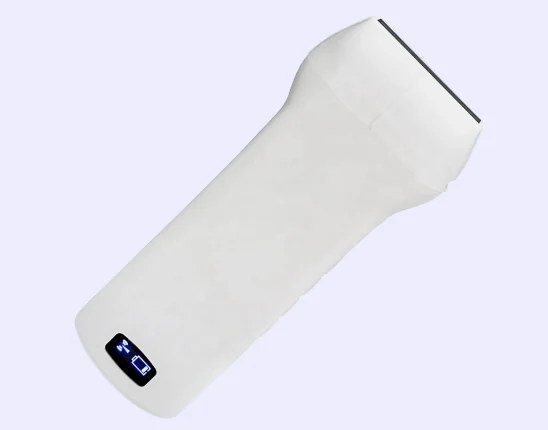For decades dermal fillers have been delivered to the face through a hypodermic needle. Nevertheless, aesthetic cannulas have become more popular over recent years, particularly for more extensive regions of the face.
When many dermal kits come with both a sharp and blunt tip needle, how do practitioners choose between the two methods when treating a patient? Let’s explain the main advantages and disadvantages of sharp needles and cannulas while highlighting the differences between the two.
Relatively recently, the use of Microcannula (or micro-cannula) has been introduced as a preferred method for the injection of fillers. This innovative method has been quickly gaining popularity among leading cosmetic clinics and doctors. Unlike traditional needles that are stiff and have a sharp tip to penetrate the skin, Microcannulas are flexible and have a blunt tip. Instead of piercing through the tissues, the cannula opens up its path between the anatomic structures of the skin.
Advantages of Microcannulas
Using Microcannula for filler injection offers several advantages over conventional needles, such as:
- Precision: When a Doctor uses a blunt-tipped cannula, they can shoot filler more accurately to achieve the results the patients desire.
- Minimum downtime: Sharp needles tend to cause bruising and swelling, which is hard to avoid. The blunt-tipped cannula technique decreases the chance of swelling and bruising, requiring minimum downtime.
- More dependable technique: A blunt-tipped cannula cannot enter an artery. This guarantees that it is a much safer option for any augmentation treatments.
- Tremendous Flexibility: With just one injection site, a large area can be treated or filled, giving the Doctor much more flexibility.
- Minimized risk of bleeding and bruising: Sharp needles can puncture veins and arteries below the skin, a blunt cannula will push them aside.
- Less discomfort: Having many shots with sharp needles around the lips can feel painful and sore. Many people describe needle injections as bothersome, while patients who are injected through using a cannula describe the feeling as “pressure.”
At the beginning of the filler injection using Microcannula, your Doctor creates a small entry point in your skin using a fine sharp needle. This is a vital step since the Microcannula has a blunt tip and is incapable to penetrate into the skin by itself. The entry point is very small and superficial and does not cause substantial pain or bleeding. Then the Doctor delicately inserts the Microcannula into the small opening and glides it under your skin to reach the sections of filler injection. The Microcannula slides through the spaces present between the tissues, it can be moved under the skin without creating any injuries to the tissues, and the patients usually do not feel any pain as the Doctor guides it under their skin.
Sharp Needle VS Blunt Microcannula
Probably the most apparent distinction is that a traditional needle has a sharp tip while the microcannula is blunt. The main issue when using a needle to deliver dermal filler is the possibility of inflammation and bruising post-treatment. After inserting the needle, there is a likelihood that it will penetrate the blood vessels underneath the skin, ending in a bruise. While practitioners can take several measures and use their expertise of facial anatomy to minimize the risk of bruising, even the most experienced practitioners can’t ensure that a patient won’t bruise.
In contrast, a cannula, thanks to its blunt tip, does not present a threat. A small-bore needle is used to make the first entry point for the cannula to enter. Once the cannula enters under the skin, it is far less likely to pierce and pass through the blood vessels. Instead, it merely pushes past the vessels, causing less trauma beneath the skin and, consequently, less likelihood of bruising post-treatment.
Less risk, fewer Injections, Less Pain With Microcannula
A risk worth mentioning concerning the sharp needle is not just penetrating the blood vessel but shooting the filler into it, leading to vascular occlusion. That can result in much more severe complications. Again, there are specific standards that practitioners take to ensure that this doesn’t happen; however, it is something that must be acknowledged when using a needle.
The risk of vascular occlusion alone is reason enough why many doctors prefer to use a cannula in higher-risk regions such as around the eye. A cannula won’t tear any blood vessels in the region, which makes it less likely to cause any severe complications.
Another significant distinction between needles and cannulas is that a cannula is generally significantly longer than a needle, and is extra flexible. The length and flexibility of a cannula allow for smoother, consecutive delivery of filler, in areas such as the jawline. It can also be a desirable solution for patients who are apprehensive about needles since there’s only one injection site.
A cannula will generally only require a modest number of insertion points as it can stretch a lot further under the skin, which makes the overall treatment less painful. A sharp-tipped needle is much shorter and will need to pierce the skin several times to deliver the filler across the entire treatment area.
Why Would Doctors Use A Microcannula?
Practitioners see the flexibility/length of a cannula as one of its significant advantages. Some, however, see it as a disadvantage. A small needle allows for more control and accuracy, particularly in areas that require a great deal of precision.
Ultimately, there are advantages to both methods, depending on the area being treated and the patient. Sometimes it will come down to individual preference for practitioners. Many practitioners may feel extremely confident carrying out the bulk of their dermal filler procedures using just a needle, or just a cannula. In contrast, others may be happy to switch between the two depending on the individual case. Some might not want to learn a new method. Most doctors will agree that cannula is a valuable skill, even if it is not something they use very often.
If you’re a doctor who wants to purchase microcannulas, then stop by FACEMed’s Store for all our available microcannulas. We carry multiple sizes to suit whatever your needs are.
Regardless of what the Doctor is using the utmost care should always be taken to ensure safety for the patient.
-
 Ultrasound Probe$2,455.00 – $2,835.00
Ultrasound Probe$2,455.00 – $2,835.00






